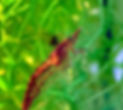Aquatic Cleanup Crew: Fish that Keep Your Aquarium Sparkling Clean
- Let's Live A Life
- Oct 31, 2023
- 3 min read
Updated: Nov 15, 2023
Maintaining a clean and healthy aquarium is a top priority for aquarists. An essential component of an effective aquarium cleaning strategy is a team of "cleaner" fish that help manage waste, algae, and debris. These fish, often referred to as the "cleanup crew," play a vital role in keeping your aquarium water crystal clear and the ecosystem in balance. In this article, we'll introduce you to some of the most effective cleaner fish species that can assist in maintaining a pristine aquatic environment.

Cory Catfish
Corydoras catfish, often referred to as "Cories," are small, bottom-dwelling fish that are excellent at cleaning up food particles and debris that settle on the substrate. They are peaceful, social fish that come in various species, each with its unique pattern and coloration. Cories are a popular choice for community aquariums and are known for their endearing behavior.

Plecos
Plecos are well-known algae eaters and are appreciated for their ability to keep aquarium glass and decorations clean. They have a characteristic sucker-like mouth that allows them to attach to surfaces and scrape off algae. Common pleco species include the Bristlenose Pleco and the Sailfin Pleco.
Read more:

Siamese Algae Eater
Siamese Algae Eaters are named for their exceptional algae-consuming capabilities. They are particularly effective at controlling common types of aquarium algae, such as green hair algae and black beard algae. These fish are peaceful and can coexist with a variety of tankmates.

Oto Catfish
Otocinclus catfish, often called "Otos," are tiny, peaceful fish that specialize in consuming soft algae, particularly diatoms. They are a great choice for small aquariums and are known for their active and social behavior. Otos are well-suited for planted tanks.
Read more:

Amano Shrimp
While not technically fish, Amano shrimp are excellent algae eaters. They actively graze on various types of algae, including green spot algae and brown diatoms. Amano shrimp are also known for their scavenging habits, helping to keep the substrate clean.

Red Cherry Shrimp
Another non-fish addition to your cleanup crew, Red Cherry Shrimp, are effective at consuming algae and detritus in your aquarium. They come in various colors and add a vibrant pop to your tank while performing essential cleaning duties.
Read more:
Maintenance and Care
While cleaner fish can significantly reduce the need for manual cleaning and algae control, it's important to provide them with proper care to ensure they remain effective members of your cleanup crew:
Water Quality: Maintain stable water conditions, including appropriate temperature, pH, and ammonia/nitrite/nitrate levels, to ensure the health of your cleaner fish.
Diet: In addition to their natural foraging habits, consider supplementing their diet with specialized foods designed for their specific needs. This helps provide essential nutrients and ensures their cleaning activities don't deplete their energy.
Compatibility: Make sure that the cleaner fish you choose are compatible with your existing tank inhabitants. Avoid aggressive or predatory fish that might harm them.
Shelter and Hiding Places: Provide hiding spots and shelter for your cleaner fish, as they may need a place to retreat or rest.
Observation: Regularly observe your aquarium and your cleaner fish to ensure they are active, healthy, and performing their cleaning duties effectively.
Cleaner fish are an invaluable addition to your aquarium, as they play a vital role in maintaining a pristine and balanced aquatic environment. Corydoras catfish, Plecostomus, Siamese Algae Eaters, Otocinclus catfish, and shrimp species like Amano and Red Cherry Shrimp are just a few examples of cleaner fish that can help keep your aquarium sparkling clean.
By choosing the right cleaner fish for your tank and providing them with proper care and suitable conditions, you'll not only enjoy a beautiful and well-maintained aquarium but also ensure the health and happiness of your aquatic friends. So, consider adding these diligent helpers to your aquatic ecosystem and witness the magic of a self-sustaining, harmonious underwater world.
Photo Credits:
By Matthew Mannell - Own work, Public Domain, https://commons.wikimedia.org/w/index.php?curid=8839241
By NinjaTPenguin at English Wikipedia - Transferred from en.wikipedia to Commons by Quadell using CommonsHelper., Public Domain, https://commons.wikimedia.org/w/index.php?curid=16621130
By Przemysław Malkowski - Own work, CC BY-SA 3.0, https://commons.wikimedia.org/w/index.php?curid=6764948
By Paweł Cieśla Staszek_Szybki_Jest - Own work, CC BY-SA 4.0, https://commons.wikimedia.org/w/index.php?curid=832791
By Stefanie Leuker - Imported from 500px (archived version) by the Archive Team. (detail page), CC0, https://commons.wikimedia.org/w/index.php?curid=72823464
By CHUCAO - Own work, CC BY-SA 3.0, https://commons.wikimedia.org/w/index.php?curid=25734274



























